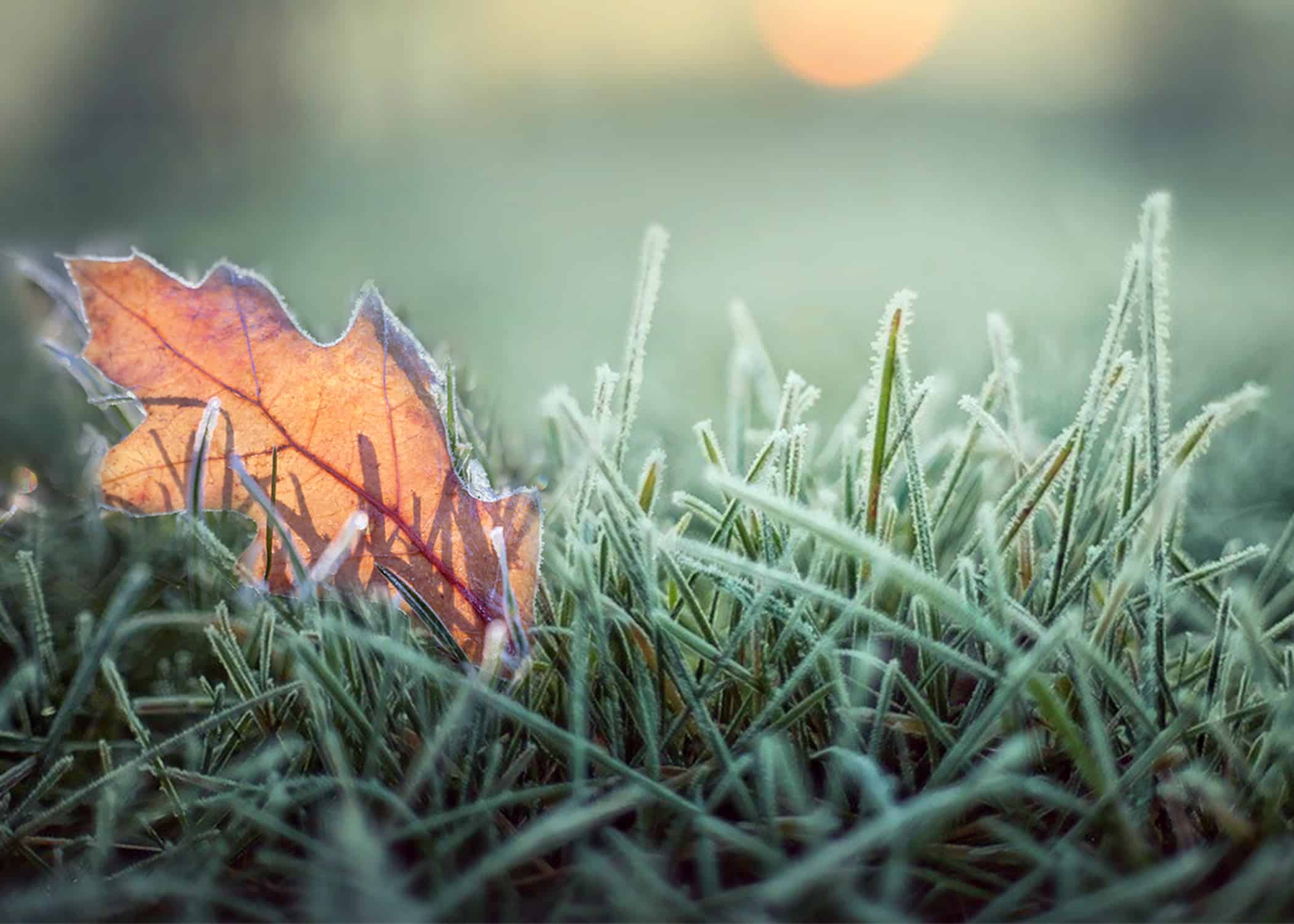
20 Oct Frost or Freeze?
Summer is gone, and autumn is quickly scurrying away. You can’t stop the cold from coming to your garden, but we can help establish the difference between a frost and a freeze and how you can prepare for both. While a frost advisory may not be devastating for your plants, there’s always a chance that an anticipated frost could become a freeze. It’s essential to know the difference between a frost and a freeze and the potential of each on your lawn and garden.
What is Frost?
Frost is much less threatening than it sounds and can occur without serious damage to plants. Frost is condensed water that has frozen overnight. It is not snow, nor is it ice. As air temperatures cool, the ground begins giving off heat. This is called radiational cooling. Generally, on cold, clear nights, more heat is given off, causing objects like grass to become colder than the surrounding air. Depending on the conditions, frost can be light and scattered or heavy enough to kill flowers, bringing dormancy in plants. For a frost to kill plants, the ground has to lose enough heat so that the freezing temperature occurs at ground level. Frosts are short-term events that happen overnight or in the early hours of the morning when temperatures are expected to fall from a range of 36 degrees Fahrenheit down to about 32 degrees Fahrenheit. Hardier plants may come through unscathed, but tender plants will probably suffer some damage and begin to go into dormancy. It’s one reason the USDA designates their hardiness zones by the first and last expected frost dates.
Frost on the Lawn
Frost is caused when colder nighttime temperatures sink below 32 degrees meet condensed water. Had the temperature stayed above 32 degrees Fahrenheit, it would have been dew. Remember, as a kid, your dad yelling, “don’t walk on the grass?” Frost makes blades of grass brittle like glass. If you step on it before the frost dissipates, it will break the blades, killing it before the winter weather even sets in.
Contrary to popular belief, frost does not mean that the lawn care season is over. What it does mean is the grass in your yard will stop growing over the next few weeks. As long as your lawn is green, it is still alive and thriving; you should continue to maintain it until it turns brown.
Feeding your lawn a fall application of fertilizer before it goes dormant for winter can protect your turf over the cold months and help it look healthier come spring. Once frost becomes a regular occurrence, your lawn will slow its growing process and eventually stop because it is getting fewer nutrients. As long as you maintain your lawn through to the end of the growing season, your spring lawn will emerge beautiful and summer-ready almost immediately.
How to protect your garden and lawn:
It may sound counterintuitive, but water can act as an insulator. Wet soil holds four times more heat than dry soil. Deep watering allows moisture to evaporate slowly overnight. This evaporation creates friction and heat around plants and grass blades. As the night air temperature drops to 32 degrees or slightly below, your plants and turf will have a somewhat higher temperature from the evaporative heat processes and won’t be able to reach the freezing temperatures that cause damage. This only works for a frost, so don’t push your luck and try this during a hard freeze. It is essential to keep your plants, trees, and shrubs well-watered until the ground has completely frozen. They may be dormant above ground, but their roots are still active.
Fall is a great time to apply mulch around plants and shrubs. Mulch insulates vulnerable plants’ root systems, keeping them healthy, strong, and improving their chance to survive the winter. Stop on by our Sun Valley Landscaping Supply Yard today and pick up the mulch you need to protect your plants and at a great price!
Hard Freeze
Freezes are more destructive than frost. Sudden and prolonged freezing to turf, plants, and shrubs will be more damaging than gradual cooling. Warnings are issued when there is an 80% chance of the surface air temperature dropping to 32 degrees Fahrenheit or lower. A hard freeze takes place when the temperature falls below 28 degrees Fahrenheit. When these conditions are forecasted, freeze warnings are issued by NOAA. It’s interesting to note frost and freeze advisories are only issued during spring and fall growing seasons. If the plants are already dormant, it’s referred to as cold weather.
The first frost doesn’t mean that it’s time to cease lawn care entirely, it simply is a sign that winter is coming. We are here for you whether you need help winterizing your sprinkler system or updating your landscaping to add more winter interest plants. Give us a call today!


